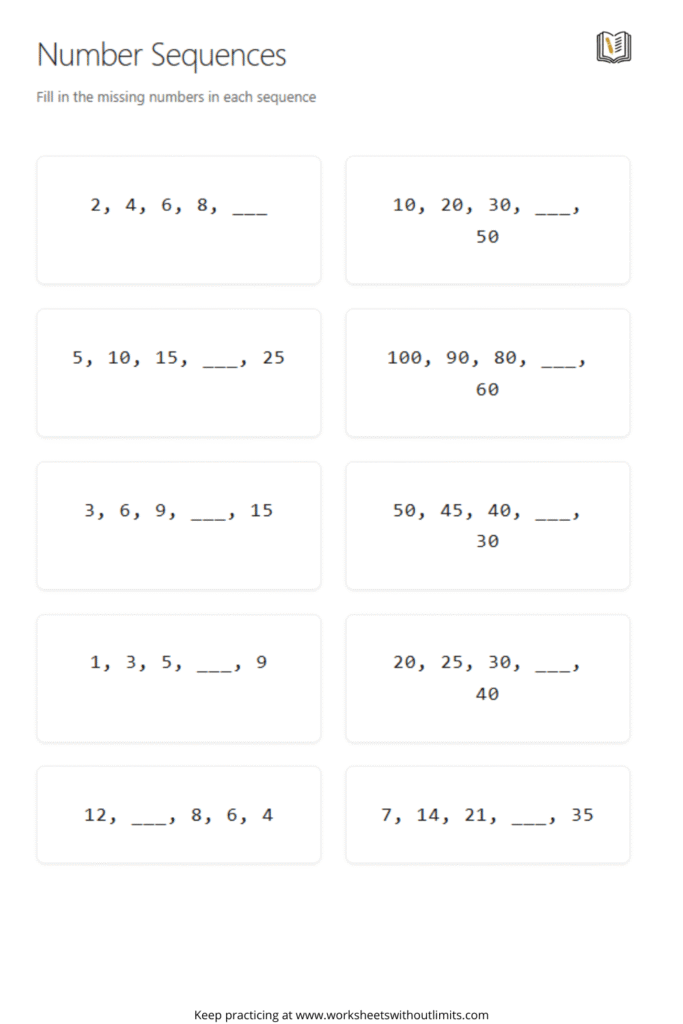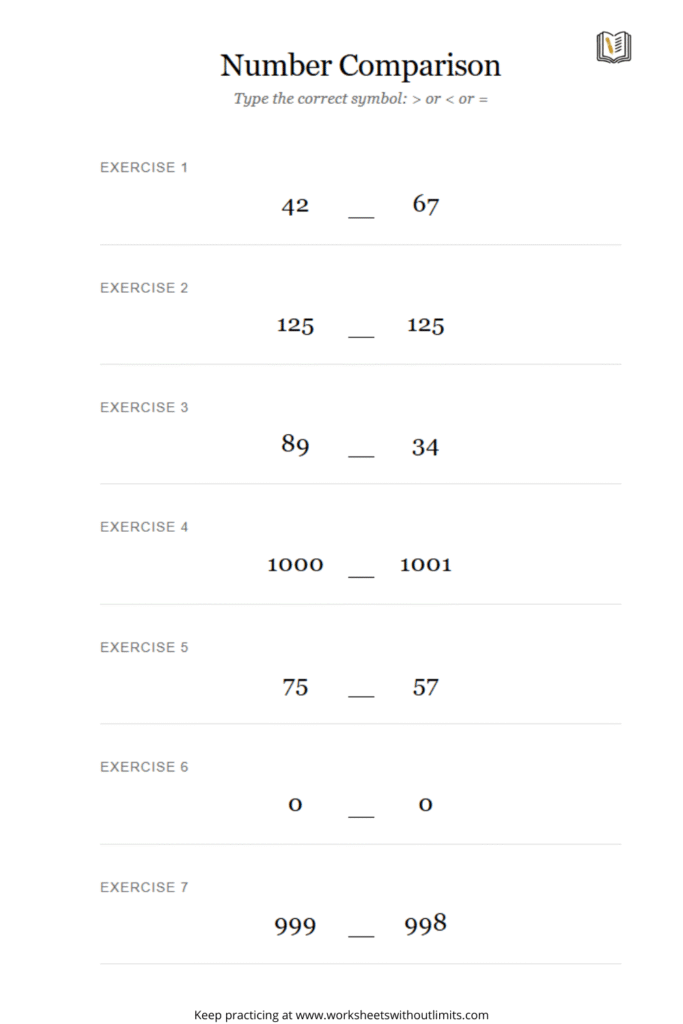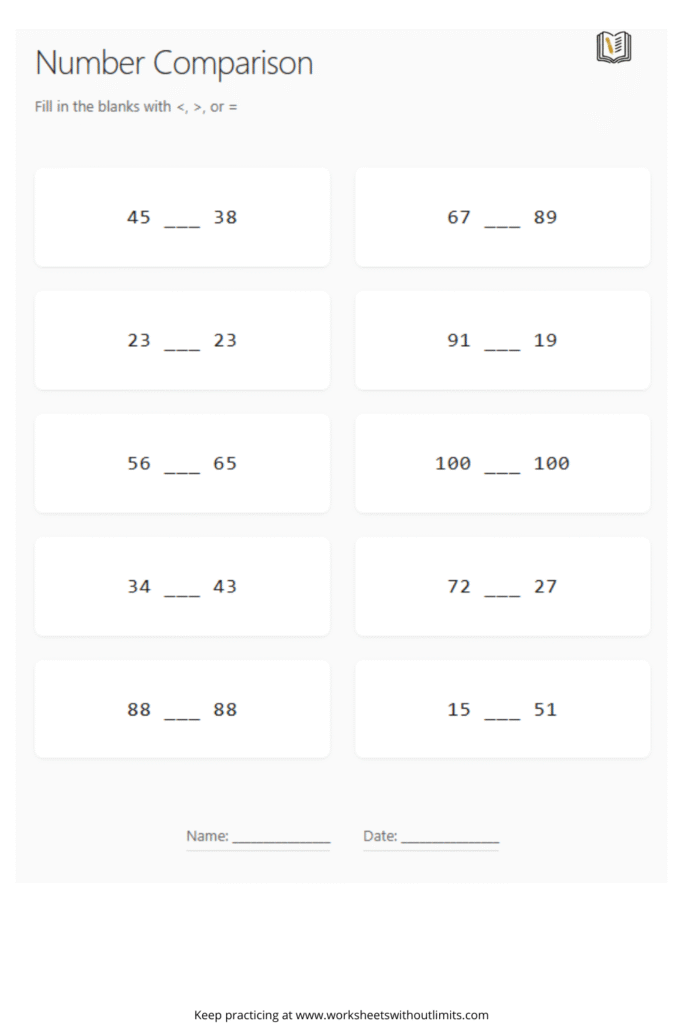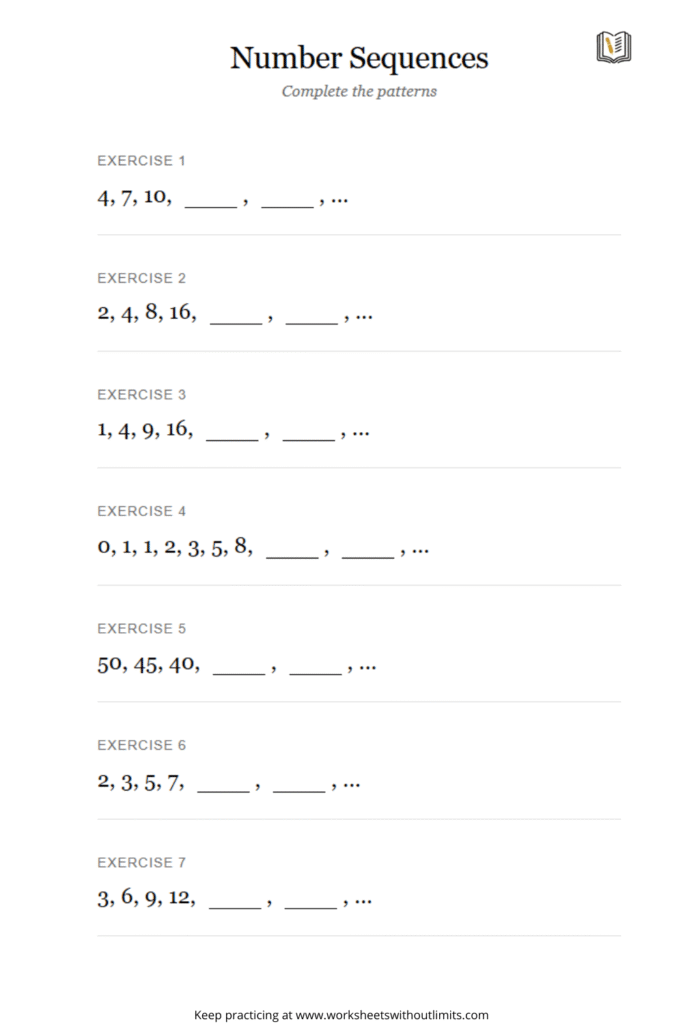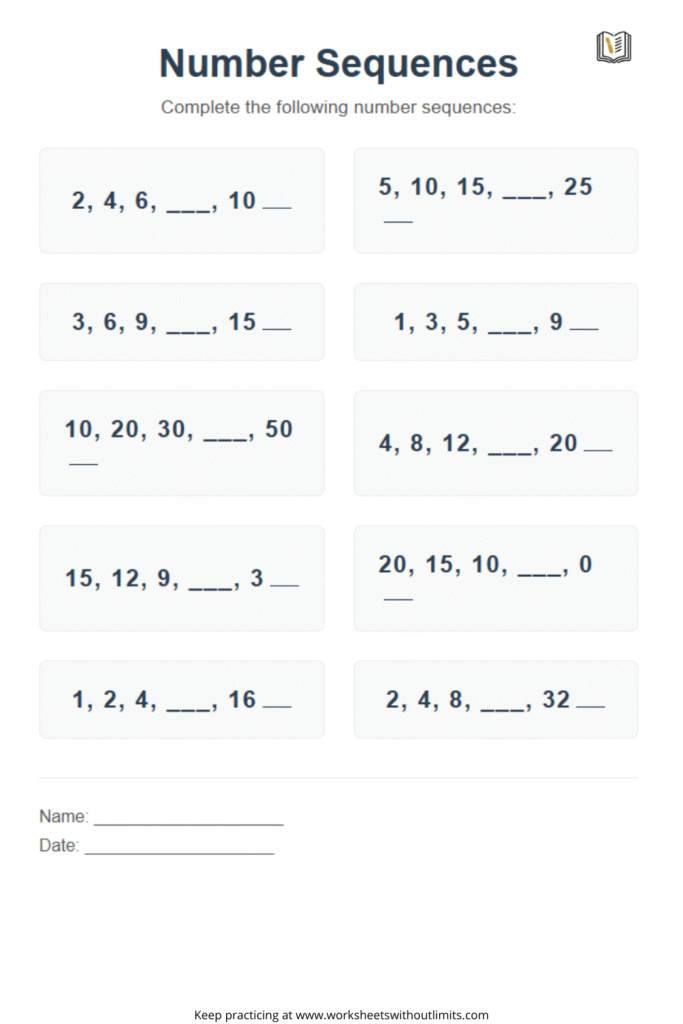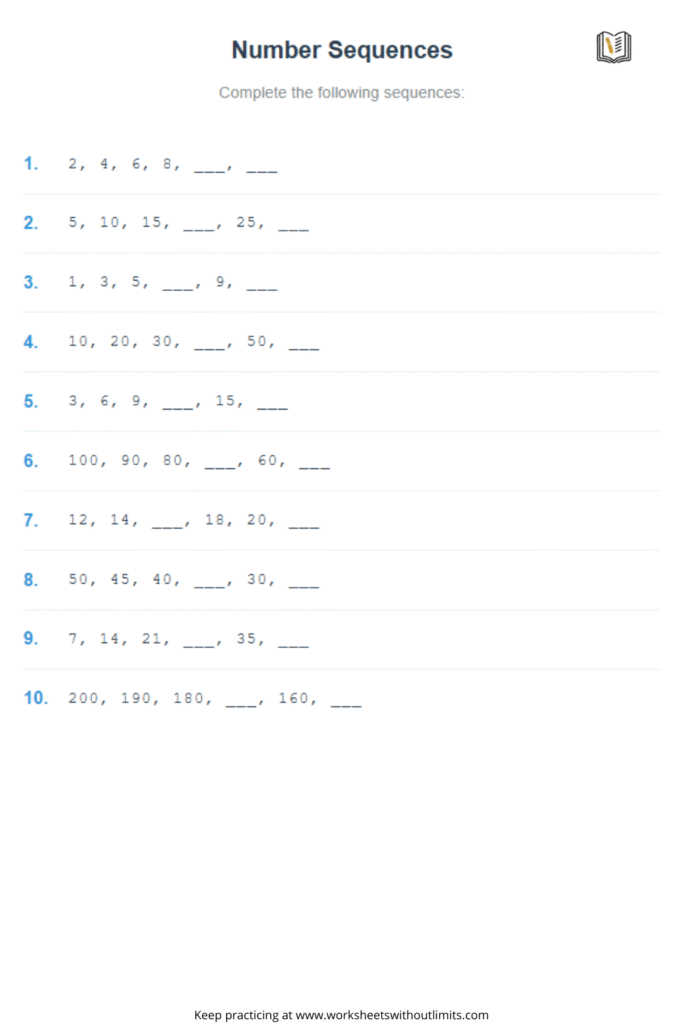Number patterns are a key concept in mathematics, helping students build their skills in recognizing sequences and understanding how numbers relate to one another. Whether you’re teaching or learning, mastering number patterns can significantly enhance a student’s ability to solve problems, improve their critical thinking, and help them with more advanced math topics. This section will dive into the importance of practicing number patterns, what children are expected to learn, and how various resources like worksheets can play a critical role in this process.
Ordering Numbers
Place the numbers on the number line from smallest to largest:
What Are Number Patterns?
Number patterns, also known as number sequences, are arrangements of numbers that follow a specific rule or formula. They can be simple, such as counting by twos (2, 4, 6, 8...), or more complex, such as Fibonacci sequences or arithmetic sequences. Understanding these patterns helps students recognize relationships between numbers, anticipate what comes next in a series, and predict future values based on current ones.
For example, in an arithmetic sequence like 3, 6, 9, 12..., the pattern follows a rule: each number increases by 3. In a geometric sequence, numbers may increase or decrease by a fixed percentage or factor. Number patterns are often represented in worksheets and exercises, helping students practice identifying and continuing these sequences.
The Importance of Practicing Number Patterns
Foundational for Future Math Concepts
Mastering number patterns is essential because it lays the groundwork for understanding more complex mathematical concepts. As students progress through their education, they will encounter topics such as algebra, geometry, and calculus, all of which build on the fundamental understanding of sequences and number relationships. By practicing with number and patterns worksheets, students develop skills that will be crucial in tackling equations, solving for unknowns, and understanding mathematical functions.
Enhancing Problem-Solving and Critical Thinking Skills
Practicing number patterns helps students develop problem-solving abilities. When students are asked to continue a number sequence or determine the next number in a pattern, they need to use logic, identify rules, and apply their reasoning. This builds critical thinking skills, which are necessary not only for math but also for a wide range of real-life situations, including decision-making, budgeting, and planning.
Building Confidence in Math
For many students, understanding number patterns can be the key to unlocking confidence in mathematics. When students can confidently recognize and predict number sequences, they feel more empowered in their math skills. This confidence can translate to greater success in other areas of mathematics, as students begin to see the logical connections between concepts and become more comfortable with numbers overall.
Improving Memory and Focus
Working with number patterns also helps improve memory. The repetitive nature of recognizing and continuing sequences encourages students to engage their memory, improving their ability to recall numbers and patterns over time. In addition, this practice helps to build focus as students concentrate on identifying the rules governing the patterns and applying them correctly.
Why Do Kids Study Number Patterns?
Number patterns are introduced early in a student’s education because they play a critical role in their mathematical development. At its core, learning number patterns teaches students how numbers work together and how they can predict or calculate the next number in a sequence.
- Foundation for Advanced Math: As students grow older, they will need a solid understanding of number patterns to work with algebraic expressions, geometric figures, and even in statistics. Recognizing the relationship between numbers is foundational to these subjects.
- Real-World Applications: Number patterns have practical applications in real life. They are seen in things like the growth of investments (interest rates), the number of days in months, or even patterns in nature (such as the arrangement of leaves or flowers). This makes number patterns a relevant and valuable concept to study.
- Building Mathematical Intuition: Understanding how to work with number patterns helps build mathematical intuition. When students can recognize patterns, they become more adept at solving problems without necessarily having to rely on memorization or formulas. This type of problem-solving is an important skill that transfers to various academic and professional fields.
Skills Developed Through Studying Number Patterns
- Pattern Recognition: The more students work with number patterns, the better they become at spotting similarities and relationships between numbers. This recognition extends to other areas of mathematics, such as graphing and functions, where identifying patterns is essential.
- Logical Thinking: Number patterns promote logical thinking. When students analyze a sequence of numbers, they have to consider what the next number might be, using reasoning and rules. This kind of structured thought process is valuable for solving complex problems.
- Mathematical Fluency: By continually practicing number sequences, students become more fluent in working with numbers. This fluency is critical as they encounter more advanced math topics where understanding the flow of numbers and their relationships will be key to success.
- Analytical Skills: Working with number patterns also strengthens students' analytical skills. They must assess what makes a pattern and understand the underlying structure, which can aid them in other areas of analysis and data interpretation.
Tips for Practicing Number Patterns
- Start with Simple Sequences: Begin by introducing basic number patterns like counting by 1s, 2s, or 5s, and then gradually move on to more complex patterns, such as those involving multiplication or division.
- Use Visual Aids: Graphs, charts, and number lines are helpful tools when learning about number patterns. These visuals make it easier for students to see how numbers progress, making the concept more tangible.
- Interactive Worksheets: Encourage students to use number patterns worksheets that include different types of sequences, such as arithmetic sequences, geometric sequences, and Fibonacci sequences. Worksheets are interactive, helping students recognize and practice various patterns.
- Encourage Word Problems: Word problems involving number patterns allow students to apply their knowledge in real-world contexts. This makes the lesson more engaging and demonstrates how number patterns are used outside the classroom.
- Group Activities: Group activities, where students work together to solve number pattern problems, can help foster collaboration and provide an opportunity for peer learning. Discussing and explaining patterns to others can reinforce their own understanding.
Number Patterns Worksheets
To support learning, number patterns worksheets are an excellent tool for students to practice. These worksheets cover a variety of patterns, from simple sequences to more complex mathematical series. Students can use these worksheets to challenge themselves, check their understanding, and improve their skills. They are especially useful in reinforcing the concept of number patterns outside of the classroom, whether used for homework or independent practice.
Educational Sheets for Extra Practice
At the bottom of this page, you’ll find downloadable educational sheets focused on number patterns. These resources provide further opportunities for practice, whether you’re a teacher or a parent looking for materials to support your child’s education. These sheets include exercises that range from basic sequences to more advanced patterns, giving students the chance to develop their skills progressively.
By consistently using number patterns worksheets and educational sheets, students can enhance their ability to recognize, analyze, and apply number patterns, preparing them for more complex mathematical concepts in the future.
Find all the educational worksheets on our Pinterest account.

